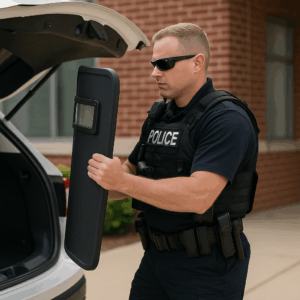Ego states are specific mental conditions that encompass certain behaviors, emotions, and thought patterns. Understanding and working with these ego states can be a crucial aspect in mitigating potential violence, as it helps individuals gain insight into themselves and control their reactions to stressors.
In potentially violent situations, recognizing the triggers and corresponding ego states can provide valuable information to individuals and professionals alike. This awareness allows for the development of targeted intervention strategies, designed to reduce the likelihood of violent behavior. By understanding the underlying factors that contribute to aggression, appropriate measures can be taken to manage and de-escalate potential conflicts effectively.
Understanding EGO States
Origins of EGO States
EGO states are a concept originating from Eric Berne’s transactional analysis theory. EGO states represent the different ways individuals think, feel, and behave in various situations. The theory suggests that people have three main EGO states: Parent, Adult, and Child. The Parent state is influenced by the person’s parents or authority figures, while the Adult state is based on rational thinking and problem-solving. The Child state represents the person’s emotional and instinctive responses, formed during childhood.
These states are constantly present and can shift depending on the context. By understanding their own and others’ EGO states, individuals may be able to mitigate potential violence and handle conflicts more effectively.
Role of EGO States in Human Behavior
The interaction between different EGO states is crucial in understanding human behavior. These shifts in states can be triggered by both internal and external factors. For instance, a person in the Parent state might become critical or controlling, while someone in the Adult state might remain calm and rational. Conversely, the Child state can manifest in emotional outbursts or impulsive actions.
EGO states play a significant role in mitigating potential violence as they are directly related to the psyche. Research has shown a link between EGO states and posttraumatic stress. Posttraumatic stress might result in individuals developing certain scripts or patterns of behavior as a way of coping with past traumas. When EGO states are imbalanced, these scripts can lead to aggression or self-destructive behaviors.
By recognizing and addressing the underlying EGO states in any given situation, individuals can work towards more balanced and healthy interactions. This self-awareness can help prevent conflicts from escalating into violence and promote the development of constructive coping strategies in dealing with stress and other challenges.
EGO States and Violence
The relationship between EGO states and violence can be understood through examining the role of violent crime and mental illness in the development and manifestation of these states.
Violent Crime and EGO States
Violent crime, can adversely affect a person’s mental well-being and lead to the development of negative EGO states. When an individual experiences or witnesses violence, they may become anxious, fearful, and develop a sense of insecurity. The EMDR International Association suggests that traumatized individuals may possess poorly-adapted EGO states that need intervention.
Effective intervention techniques may include addressing attachment-related issues, as trauma from violent crime can lead to difficulties in forming and maintaining healthy interpersonal relationships. These challenges can subsequently hinder an individual’s capacity to cope with and recover from the impact of violent crime.
Mental Illness and EGO States
Mental illness is another factor that can influence EGO states, which in turn, can play a role in mitigating potential violence. According to GoodTherapy, EGO state therapy is a valuable approach for addressing posttraumatic stress disorder (PTSD) and anxiety, both of which can be associated with exposure to violence or violent behavior.
EGO state therapy helps individuals identify and address different parts of their psyche that may be contributing to their mental health issues. Through this process, patients can develop a better understanding of their feelings, thoughts, and behaviors, making it easier to manage symptoms and improve their emotional well-being.
In conclusion, understanding and addressing EGO states can be crucial in mitigating potential violence, as it enables individuals to work through their emotional, cognitive, and behavioral issues related to violent crime and mental illness. By utilizing techniques linked to EGO state therapy, individuals can work towards healthier interpersonal relationships and improved mental health, reducing the risk of violent behavior.
Environmental Factors
Physical Conditions and Crime
The physical environment can shape the occurrence of crime and violence. Environmental design plays a role in either promoting or deterring violent behaviors. Aspects like proper lighting maintained landscapes, and well-designed public spaces increase the perception of safety and reduce opportunities for crime.
Implementing strategies such as Crime Prevention Through Environmental Design (CPTED) involves designing physical spaces that discourage criminal activities. These principles include:
- Natural Surveillance: Promoting visibility of public spaces by placing windows overlooking sidewalks and installing adequate lighting.
- Territorial Reinforcement: Clear delineation of public and private spaces through fencing or signage, creating a sense of ownership that discourages would-be offenders.
- Access Control: Managing the flow of people in and out of a space with barriers or well-placed entrances and exits.
Incorporating these environmental design strategies can foster safer communities and combat the prevalence of crime or violence.
Policy Interventions and Programs
Education and Awareness Programs
Educational and awareness programs play a crucial role in mitigating potential violence. By focusing on promoting empathy and emotional intelligence in individuals, these programs can help address the root causes of violence and foster a more compassionate society. Initiatives may involve teaching conflict resolution skills, promoting prosocial behavior, or nurturing emotional well-being.
Furthermore, educating the public about the importance of recognizing and reporting potential threats can help prevent possible acts of violence. Awareness campaigns may also include information on how to recognize the signs of someone in distress and how to safely intervene or provide support.
Community Involvement
Role of Community Leaders
Community leaders play a crucial role in mitigating potential violence, especially in areas with high rates of violence impacting people of color. By acting as mediators, they can help resolve conflicts peacefully before they escalate. These leaders often possess cultural and contextual knowledge that allows them to gain the trust of community members and address underlying issues contributing to violent behavior.
Youth Engagement
Engaging young people is key to preventing violence in communities. By providing positive role models, mentorship, and opportunities for growth, community leaders can empower youth to become active agents of change in their neighborhoods. Community-centered programs can involve young people in the planning and execution of violence prevention activities, ensuring that their interests and needs are considered.
Youth-led initiatives may include:
- Peer mediation: By training young people in conflict resolution, these initiatives equip them with the skills needed to promote peaceful dialogue and prevent violent encounters.
- Youth-led awareness campaigns: Through creative means like art, music, and theater, young people can raise awareness of the impacts of violence and advocate for non-violence solutions.
- Participatory research: Involving youth in the identification and analysis of community issues can strengthen their understanding of the root causes of violence and support evidence-based decision making.
In conclusion, community involvement is essential for violence prevention. By engaging community leaders and young people in the development and implementation of tailored, culturally sensitive strategies, communities can effectively address the social determinants of violence and pave the way for a safer and more peaceful future.
Case Studies
Baltimore Violence Reduction Program
In response to the rise in violence in Baltimore, a program known as the Baltimore Violence Reduction Program was initiated to address risk factors and employ ego state therapy strategies. This program focused on identifying key aspects within communities that contributed to violent behaviors, such as poverty and lack of resources. It also emphasized the importance of investing in community development to create a safer environment and promote positive change.
Ego state therapy was utilized to help individuals identify and address their internal conflicts, which can be a contributing factor to violent behavior. By fostering self-awareness and emotional regulation, individuals within the program were better equipped to handle stressors and conflicts without resorting to violence. Moreover, the program incorporated elements of criminology by focusing on the root causes of violence and identifying effective intervention strategies to reduce crime rates and murders in the area.
San Francisco Mediation Example
Another instance where ego state therapy was employed to mitigate potential violence is in San Francisco through mediation and negotiation processes. The San Francisco Mediation Center offered a range of conflict resolution services to address different types of disputes or conflicts that could potentially escalate into violent situations.
One key aspect of the mediation process is the focus on identifying individuals’ internal states and helping them to communicate effectively with one another. By understanding each party’s motivations and triggers, mediators were able to create an environment where parties could openly share their thoughts and feelings. This approach facilitated negotiations and redress, ultimately leading to a resolution that minimized the likelihood of violence.
In both case studies, ego state therapy proved to be a valuable tool in addressing potential violence by encouraging emotional regulation, self-awareness, and effective communication. By understanding and addressing internal conflicts, individuals were better equipped to manage situations that might have otherwise led to violence.
Conclusion
Ego states play a significant role in understanding and preventing potential violence. By recognizing the different ego states – the Parent, Adult, and Child – one can better understand the motivations and triggers that may lead to violent behavior. Implementing strategies to manage these ego states and promote healthier communication can help individuals navigate difficult situations more effectively.
One approach is to encourage individuals to adopt the Adult ego state, which promotes rational and objective thinking. This ego state facilitates problem-solving and reduces the likelihood of impulsive, emotion-driven actions that can contribute to violence. By fostering an environment that supports open communication and mutual understanding, individuals can better navigate conflict and cope with stressors.
Furthermore, recognizing when someone is operating from the Parent or Child ego states can help in de-escalating tense situations. When these ego states are identified, providing appropriate support and guidance can lead to more constructive resolutions. For example, a person exhibiting a Parent ego state may require reassurance, validation, or empathy to return to a more rational, Adult state of mind.
In addition to understanding ego states, it’s essential to create a supportive and safe environment for individuals experiencing anger or frustration. Resources such as counseling, workshops, and support groups can equip individuals with the tools they need to manage their emotions and develop healthier coping mechanisms for dealing with stress or conflict.
By increasing awareness of ego states and their impact on interpersonal relationships, it becomes possible to mitigate potential violence and foster healthier, more constructive interactions. Implementing these strategies in our daily lives can contribute to creating a safer and more harmonious society for everyone.
Frequently Asked Questions
What are effective techniques for applying ego state therapy in conflict resolution?
Ego state therapy can be an effective tool in addressing conflicts and reducing aggression. Some techniques include fostering self-awareness among individuals, helping them recognize and understand their different ego states, and promoting communication between ego states to enhance empathy and understanding. Additionally, therapists may utilize role-playing exercises, which allow participants to better comprehend the perspectives of others, ultimately leading to more constructive conflict resolution.
How can recognizing different ego states help in de-escalating a violent situation?
Recognizing different ego states can aid individuals in understanding the emotional and psychological factors underlying violent behaviors. By identifying and addressing these factors, individuals can adapt their responses to the situation, facilitating a calmer and more constructive approach. Moreover, understanding and acknowledging the emotions and rationale behind others’ actions can improve communication, paving the way for successful conflict management.
What role do ego states play in communication and conflict management?
Ego states play a significant role in shaping the way individuals perceive, process, and react to various situations. In the context of communication and conflict management, ego states can either drive individuals toward constructive resolution or escalate tensions. Being aware of one’s ego states and the ego states of others allows individuals to better navigate interactions, anticipate potential triggers, and consciously adapt their approach to optimize communication and effectively handle conflict.
How are ego states relevant in understanding and managing aggressive behavior?
Ego states influence an individual’s thoughts, emotions, and responses to different situations. Understanding the relationship between ego states and aggressive behavior can help therapists and individuals to identify the root causes of such behavior, and therefore, develop appropriate interventions and coping mechanisms. Monitoring and regulating ego states may assist individuals in avoiding aggressive reactions, ultimately benefiting personal growth and interpersonal relationships.









